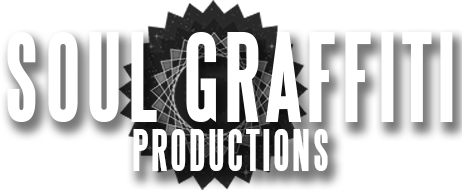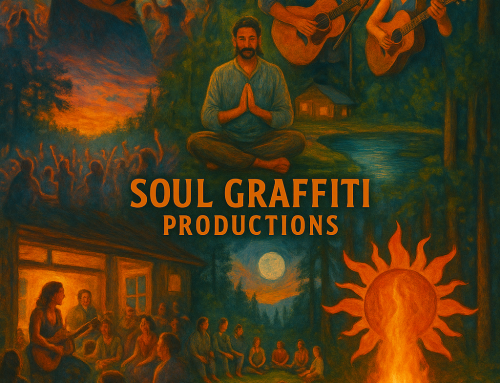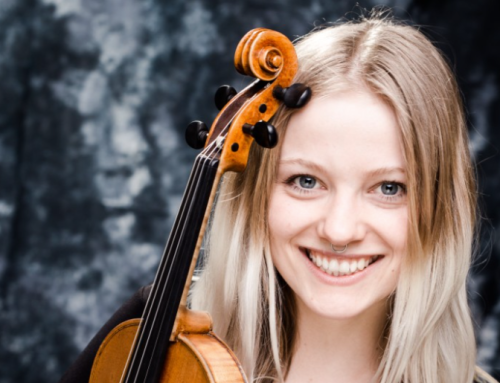In the past two days, Justin Ancheta of Soul Graffiti and Oz Fritz, did an in studio listen and mixing to some new material that will be hitting later this year of 2019 by Honey Of The Heart and Justin Ancheta Band. The understandings of three dimensional sound space was conveyed by the Master technician, Oz Fritz, Producer of Tom Waits and many other known platinum artists. Here are some basic notes and information to help gather your skills in mixing. Hopefully this allows for more intentional and better sounding mixes for the community at large, leading to more healing music and intentionality in the world.
(Below written by Justin Ancheta of Soul Graffiti)
“We started with the Kick. We equalized, compressed, and gated the kick. The gate was to make sure the ring that was recorded didn’t last as long. We made sure no side chaining was done with kick and bass. Often in the process, we compared the kick against the bass. This also led us to solo the bass and dial its sound too. The bass need a bit of EQ, compression, and chorus. Before we go to deep into the bass, we must complete the kick. To do so, we duplicated the bass track and added a -12 and -7 pitch shift. We also added an 80 ms delay slap back on the original with a 30% feedback and about 25% dry/wet ratio. Plus, we used a duplicated the kick into a midi track and EQ’d a sample to also had some more power to the kick. The affect was strong. It engaged the Subs and speakers in a balanced and clear way.
Each drum channel was meticulously looked at, looking at the peaks and valleys of each frequency. Scooping out the unnecessary lows on the snare, overheads, and Hi-hat, which considerably cleaned up the kick. The 80 ms slap back delay was customized to each channel necessary; kick, snare, vocals, bass, all became spatially placed farther or closer to the speaker depending on where this was set in the mix. We panned the drums from a drummers perspective, making sure all low end instruments were centered.
We then added the instruments one at a time; electric guitar, acoustic guitar, and ukulele. Each separate mic was EQ’d separately and dialed individually and then together with itself and then other instruments. Often we had to compare the sounds against the drums and bass for balance and space; where it landed in the mix and when it hit the speakers. The three dimensional auditory space was starting to stand out.
x=panning
y=frequency (high and lows) and
z=volume and distance (distance = reverb and delay and initial mic placements considered)
What I most enjoyed was the understanding of how intricate Oz considers each instruments sound and clarity with itself and where it sits in the mix with everything else. I’d be honored to create a mix that sounds as spatially aware as the mixes of Oz Fritz. A great example is comparing Downward from the Justin Ancheta Band Album of 2013 to the remix from Oz in 2015. Note that the 2015 remix is not mastered yet so the overall volume may be a bit quieter. The mastered version will be coming out later in 2019 with the Official music video with the song.
The biggest difference is Oz’s ability to find the low end of the bata drum, take unnecessary vocals out, and place each instrument in a way that allows for everything to be heard more clearly. I personally thoroughly enjoyed the difference of the vocals, bass, and drums. Many of the spatial dynamics created were using the tool described in the beginning of this article.
I’m going to skip around a bit and focus on the highlights, as if I wrote about the entire process, this article would be long and boring, and possibly lose your interest ; )
Vocals
One of the most important parts of a song and mix are the vocals. A simple EQ, compression, and slap back delay to place the vocals in the area intended. The vocals needed a de-esser compressor. It was important to dial the threshold and where the compression would engage. EQ details: We dropped the low end off and scooped a few mids that were ringing out a bit, plus dialed the high end to our liking. Panning vocals when there were two, and centering when there were one was an affect that worked for this song. Overall, each song will have it’s own needs and each mix should be heard and affected as it’s own art.
A mixer greatest ability is to have an intention with what they hear and be able to execute it with precision. Each time you mix you are honing your skill to influence a song to come to life. Many mixes I have heard can almost sound like cardboard, a flat, two-dimensional sound space that I wish had more life.
Oz did a great job describing the intentionality put into a song, starting with the artists. Maybe you say a prayer, sage, or set your intentional space that only brings in the energy that you wish to be present in your recording. Let the world in after and let it influence the world in the ways that you want. A mixer can set the same intentions, allowing for the creative conduit to flow through the moment and affect the instruments, the space, the self, and everyone as if it is the only thing that matters in the entire world.
I was deeply inspired by the session with Oz and really wish to continue the process of honing the skills as a producer in Ableton and other forms. Look out for more sound tips as we explore ways to be more intentional with sound both as a musician, a composer, an engineer, and a producers perspectives.”
The song we were working on is Younger Me, a new one by Honey Of The Heart due out this Spring/Summer 2019. Artists featured on this recording are: Shannon Hayden on Cello, Richard Jones on Drums, Fred Doumbe on Bass, and Maren Metke & Justin Ancheta on vocals and instruments.





Leave A Comment